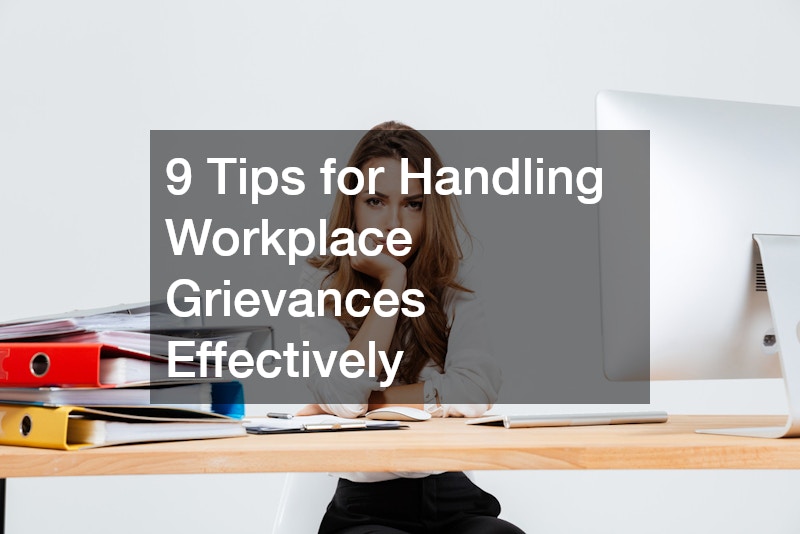Employee satisfaction is crucial for a thriving workplace. When employees are unhappy, it can lead to decreased productivity, high turnover, and even legal issues. As a business owner, it’s essential to recognize and address employee dissatisfaction promptly. Here are some key strategies to help you effectively manage and resolve workplace grievances.
1. Act Immediately
One of the most important steps in addressing employee dissatisfaction is to act immediately. When an employer becomes aware of a potential issue, it is often at a low level and can be easily resolved.
Ignoring or delaying action can lead to the situation escalating into a more significant problem, making it much harder to address.
2. Understand Your Responsibilities
As an employer, you have a responsibility to ensure your employees are working in a safe and supportive environment. This includes protecting them from bullying and harassment. Although there is no legal requirement to have a formal grievance procedure, it’s advisable to follow the labor relations code of practice. This can serve as a guideline to ensure you are taking the necessary steps to address any grievances.
3. Establish a Grievance Procedure
Having a formal grievance procedure in place is essential. This procedure should be modeled on the labor relations code of practice and clearly outline the steps both the employer and employee should take when a grievance arises. Providing employees with this procedure ensures they understand the process and their rights.
4. Address Informal Grievances First
Whenever possible, try to resolve issues through informal discussions. This approach is often more effective and less cumbersome than formal procedures. It allows for a more personal and direct resolution, which can prevent the issue from escalating. However, it’s essential to respect the employee’s decision if they choose to follow the formal grievance procedure.
5. Conduct Thorough Investigations
When handling formal grievances, it’s crucial to conduct a thorough investigation. Meet with the employee to understand the nature of their grievance. Depending on the issue, this may involve gathering evidence, speaking with witnesses, and ensuring that the grievance and disciplinary procedures do not conflict.
For example, if an employee raises a grievance about unequal pay, it may be a straightforward investigation. However, allegations of bullying or harassment require a more delicate and comprehensive approach. Ensure that both parties involved have the opportunity to present their case, and offer the right of representation to the employee during the process.
6. Evaluate the Grievance
After gathering all the necessary information, evaluate the grievance to determine its validity. You may find that the grievance is wholly valid, partially valid, or without merit. In all cases, communicate your findings to the employee and offer them the right to appeal your decision if they feel it is necessary.
7. Be Aware of Legal Consequences
Failing to address employee grievances can lead to significant legal consequences. If an employee resigns due to a fundamental breach of trust, they may claim constructive dismissal at a tribunal. This can result in legal costs and potential payouts. Even if the issue does not escalate to a tribunal, it can still impact the employee’s mental health, leading to increased sick leave and costs associated with replacing the employee. In such situations, involving an employment mediator can help facilitate resolution and potentially avoid these negative outcomes.
8. Maintain a Safe Work Environment
Bullying and harassment can have severe consequences for both the employee and the organization. While there may not always be recourse through a tribunal, severe cases that impact an employee’s mental health can lead to claims through the high court under health and safety regulations. Employers have a legal obligation to protect employees from such behaviors, particularly if it is based on characteristics like religion, sex, disability, or race.
9. Provide Support and Guidance
Many employers may not feel equipped to handle grievances effectively. Providing the necessary documentation and procedures is a good start, but offering additional support can be invaluable. Consider seeking external assistance to guide you through the process. This can include sitting in on meetings, providing advice, and helping to ensure that all necessary steps are followed without making decisions on your behalf.
In Closing
Addressing employee dissatisfaction promptly and effectively is crucial for maintaining a healthy and productive workplace. By implementing a clear grievance procedure, conducting thorough investigations, and providing the necessary support, you can resolve issues before they escalate and create a more positive work environment. Remember, happy employees are more productive and contribute to the overall success of your business.
.






